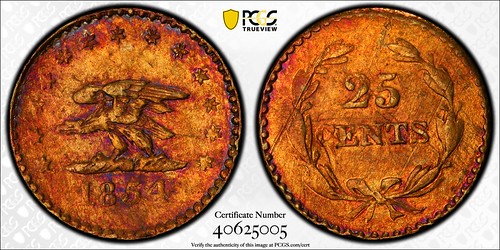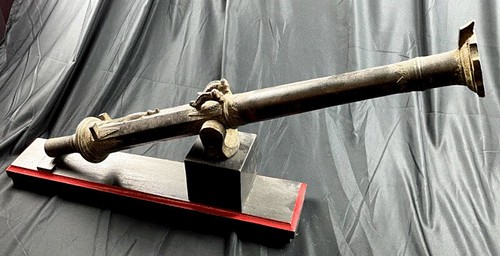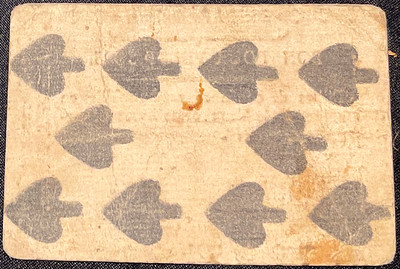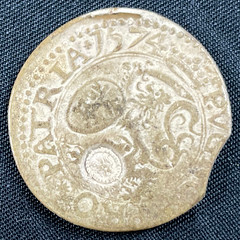
PREV ARTICLE
NEXT ARTICLE
FULL ISSUE
PREV FULL ISSUE
SELECTIONS FROM KAGIN'S MARCH 2021 SALECataloguer Bob Leonard recommended these selections from the upcoming Kagin's sale. Some great items here - most are from the Opitz consignment of Odd & Curious money. Thanks! -Editor
Lot 3030: California Gold 1854 Defiant eagle, BG-220 1854 Defiant eagle, BG-220, PCGS AU55. Rarity 7. Defiant eagle left on torse, date below; 25 CENTS in wreath. With the Arms of California half and the round dollar with G.G. and eagle, this is one of the three most highly coveted Period One coins; extremely rare, there are 10 or fewer known. For Doering, "the king of fractional gold." However, its distinctive design, late appearance, and heavy weight (it contains close to full value of native California gold) have caused its authenticity to be questioned. California gold scholar Mike Locke has expressed doubts because of its late appearance, high weight and purity, and extreme rarity. Several features of this issue, though, point unmistakably to an 1850's date. The die work appears to be that of the 1850's. The denomination of 25 cents is found elsewhere only on the very earliest round quarters of 1853; later issues, and all Period Three pieces and "token" imitations, use the fraction 1/4 (in 1838 the denomination on U.S. quarters was changed from 25 C. to QUAR. DOL., and it has been a quarter dollar ever since). Finally, the slanting 5 of the date is found on many U.S. coins of the early 1850's (only); it is said to be a peculiarity of Mint engraver James B. Longacre, 1844-1869. Later coins revert to an upright 5, as seen on fractional gold from 1859 on and all Period Three pieces. But the date on the Defiant Eagle 25 cents is very similar—except for size—to that on the 1854 Kellogg & Co. $20. The Defiant Eagle type—unique among small California gold designs—was generally unknown to numismatics until two examples surfaced in Henry Chapman's auction of the Andrew C. Zabriskie Collection, June 3-4, 1909. However, another example was in the collection of Robert C.H. Brock of Philadelphia, who collected actively from the 1880s to the 1890s and who donated his collection to the University of Pennsylvania in 1898; it was purchased with the rest of his coins by B. Max Mehl in 1952 and sold at auction Nov. 30, 1954. But how did Zabriskie get these Defiant Eagle coins in the first place? In 1873 or 1874, he purchased the California coin collection of U.S. Assayer of Gold Augustus Humbert from his California executors. Presumably he found a few of these coins in an envelope, unused, and began trading them to other collectors, retaining two for himself. (Zabriskie joined the American Numismatic Society in 1874.) Sadly, we may never know! (PCGS AU55) Ex Dennis Steinmetz 1983, ex Jeff Garrett, Lexington, KY circa 1982-83, ex NERCA, 4/10/1981, lot 1498, $12,650, ex Ken Goldman, Boston, MA (joined PNG 1975), paid $1,750, ex unknown intermediaries, ex Andrew C. Zabriskie before 1909 (?), ex Augustus Humbert 1873 or 1874 (?), ex M. Jordan and Gottard Koehler partnership, San Francisco (dissolved 1854)(?)
Lot 4074: Borneo Cannon Money Huge example of genuine Borneo cannon money on modern display stand. In the 19th century brass was so valuable in Brunei, Sabah, and Sarawak that models of Portuguese cannon were used for purchases of slaves and payment of fines. They were actually fired during weddings, birth of children, and visits of dignitaries. See Quiggin, pp. 260-61 and Fig. 116, and Opitz, p. 100 (illustrated right center). Cool! -Editor
Lot 4236: Taiwan Bead Jacket During the Japanese occupation of Taiwan, 1895-1945, many jackets were taken to Japan and cut up for their beautiful beadwork. When an original jacket was discovered in Taiwan seven years ago, it was a major news story. See Opitz, pp. 166-67. Believed to be ex Hans M.F. Schulman George L. Lee Collection Auction, Part I (Feb. 14, 1958), lot 949 (unsold), then Hans M.F. Schulman Public Auction Sale Feb. 28, 1959, lot 2418, to Nate S. Shapiro, to Detroit Money Museum Apr. 28, 1960; sold at Craig A. Whitford auction Nov. 30, 1992; bought by Ken Bressett. It hung in Ken's closet for years until his wife, Bert, made him get rid of it, and Mr. Opitz was able to acquire it in trade. Interesting and unusual - great display piece. -Editor
Lot 4254: 1791 20 Sols Playing Card Money France, 1791 playing card money for 20 sols issued by Ville de Saint-Maixent during the French Revolution. Printed on back of a 10 of spades playing card. Clear printing, one signature faint. See Opitz, p. 261. Great example of improvised emergency money. -Editor
Lot 4255: 1574 Leiden Siege 5 Sols Netherlands, Leiden, besieged by the Spanish, May 26-October 3, 1574. When the Dutch revolted against harsh Spanish rule, beginning the Eighty Years' War, the Spanish attempted to crush them by sending the merciless Duke of Alba. Massacres took place even at cities that surrendered to him. The Dutch leader William the Silent, Prince of Orange, asked Leiden to hold out for three months and he would relieve them. The only communication with Leiden was by carrier pigeon; on August 21, the mayor informed the Prince that they had held out for three months, two with food and one without food. The only possible relief was by sea, so the Dutch cut the dykes and approached in over 200 flat-bottomed boats. Progress was slow, and it took over two months to reach Leiden, at which point the Spanish retreated and the city was saved, though thousands had starved to death and almost 8,000 more died from an outbreak of the plague. Leiden minted coins in gold, silver, and copper during the siege, but when the mayor requisitioned all metal for weapons and ammunition, they pasted together pages from precious Books of Hours, hymnals, and even the Holy Bible, to make pasteboard planchets to strike coins. (This is the first official paper money issued in Europe.) 5 sols 1574, paper; Lion with sword/legend; two validation counterstamps. Mailliet 3. VF, small planchet clip. Rare and in great demand. See Opitz, p. 272 (this example illustrated, top right). Rare, interesting and seldom seen; a great piece for the numismatic bibliophile - not a book about coins, but a coin made from a book! -Editor
For more information, see:

Wayne Homren, Editor The Numismatic Bibliomania Society is a non-profit organization promoting numismatic literature. See our web site at coinbooks.org. To submit items for publication in The E-Sylum, write to the Editor at this address: whomren@gmail.com To subscribe go to: https://my.binhost.com/lists/listinfo/esylum All Rights Reserved. NBS Home Page Contact the NBS webmaster 
|






